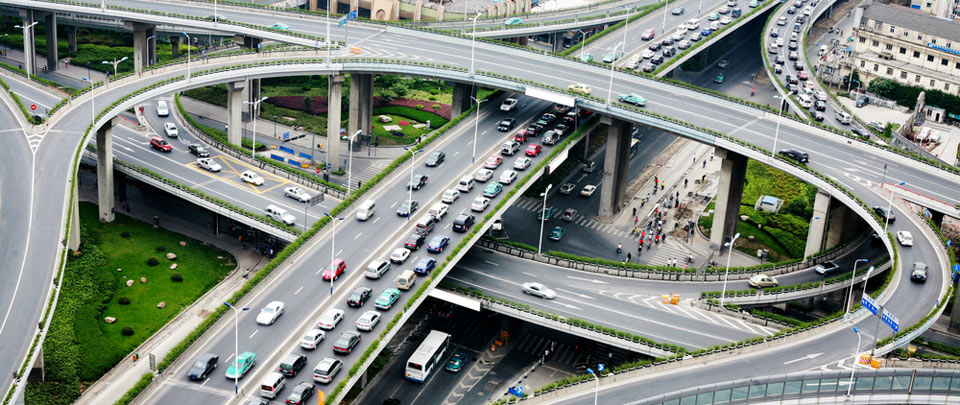What is Transportation Engineering?
Articles > What is Transportation Engineering?
Civil engineering is one of the major branches of engineering and, as its name implies, is related to engineering for civilian applications. Civil engineering improves quality of life through the provision of infrastructure such as:
- Buildings, bridges, and other structures
- Highways
- Dams and levees
- Water treatment and waste disposal plants
Transportation engineering is a branch of civil engineering that is involved in the planning, design, operation, and maintenance of safe and efficient transportation systems. These systems include roadways, railways, waterways, and intermodal operations. Typically, the demand is the amount of traffic (people, cars, railcars, barges) that is expected to use a particular transportation facility, while the supply is the quantity and type of infrastructure components (roadways, bridges, pavements, etc.). These systems are typically large and expensive.
There are a number of attributes of transportation engineering that affect the types of statistical theory that are used in the profession. One important aspect of transportation engineering is that the transportation engineer is not only interested in the infrastructure (e.g., bridges, rails, etc.) and the individual units (cars, trucks, railcars) that use the infrastructure, but also the user. Often it is necessary to understand the interaction of all three of these entities—infrastructure, individual units, and user—to understand the system as a whole. Typically the infrastructure and units are considered the supply side of the equation, while the users are identified with demand.
Experimental studies, or designed experiments, are the mainstay of many standard statistics books. They are used extensively in many engineering disciplines, including pavement engineering, that are not necessarily applicable to transportation systems engineering. For example, consider an engineer who is interested in the various factors that affect skid resistance and the relationship to crash rate. From an ethical standpoint, she cannot place various types of pavement surfacing on different sections of highway, observe what types of accidents occur, and then choose the best type of pavement based on the empirical accident results. Instead, most transportation studies are observational in nature, and as a result, the statistics used by transportation engineers reflect this characteristic. In addition, it is sometimes very difficult to obtain certain data from the transportation system, so statistical techniques that can handle missing data or use a priori knowledge are needed. Lastly, much of the data are correlated and interdependent. For example, the travel time on a given link is often correlated to the travel time on the immediate downstream link. Sometimes this correlation is negative: Consider, for example, a driver stopped at a traffic signal that is red. If the signal system is coordinated properly, the driver will have a lower probability of being stopped at the traffic signal on the next link. At other times, however, the correlation is positive: If one link is experiencing high travel times because of excessive demand, then other links also will experience high travel times because of the same demand. Regardless, as this example demonstrates, the assumption that different transportation phenomena are independent is not always valid.
In the United States transportation is estimated as representing 10% of the nation’s gross domestic product (USDOT, 2009), and a well- maintained and comprehensive system is considered by many to be a necessary condition for a successful economy. However, the American Society of Civil Engineers (ASCE) in their annual report card gave a grade of D– to the U.S. roadway system. As the report notes, “One-third of America’s major roads are in poor or mediocre condition and 45 percent of major urban highways are congested. Current spending of $70.3 billion per year for highway capital improvements is well below the estimated $186 billion needed annually to substantially improve conditions.” Given the environment of inadequate funding and critical maintenance needs, it is crucial that transportation engineers be able to understand the demands (e.g., goods and people movement) on the system as well as the characteristics of the supply (pavement, roadway geometrics, etc.). It is the premise of this book that a knowledge of statistics is critical to understanding the trade-offs so that our limited resources can be used as effectively and as efficiently as possible.
 Read also:
Read also:
- Top 10 Innovative Civil Engineering Projects Around the World
- Typical truck dimensions for pavement design
- Full Description of Civil Engineering Branches
- What is engineering and why do they need probability and statistics?
- The Most Iconic Bridges in the World and their Unique Engineering Feats
 Share:
Share:
Follow our official Facebook page (@civilengineeringbible) and Twitter page (@CivilEngBible) and do not miss the best civil engineering tools and articles!

